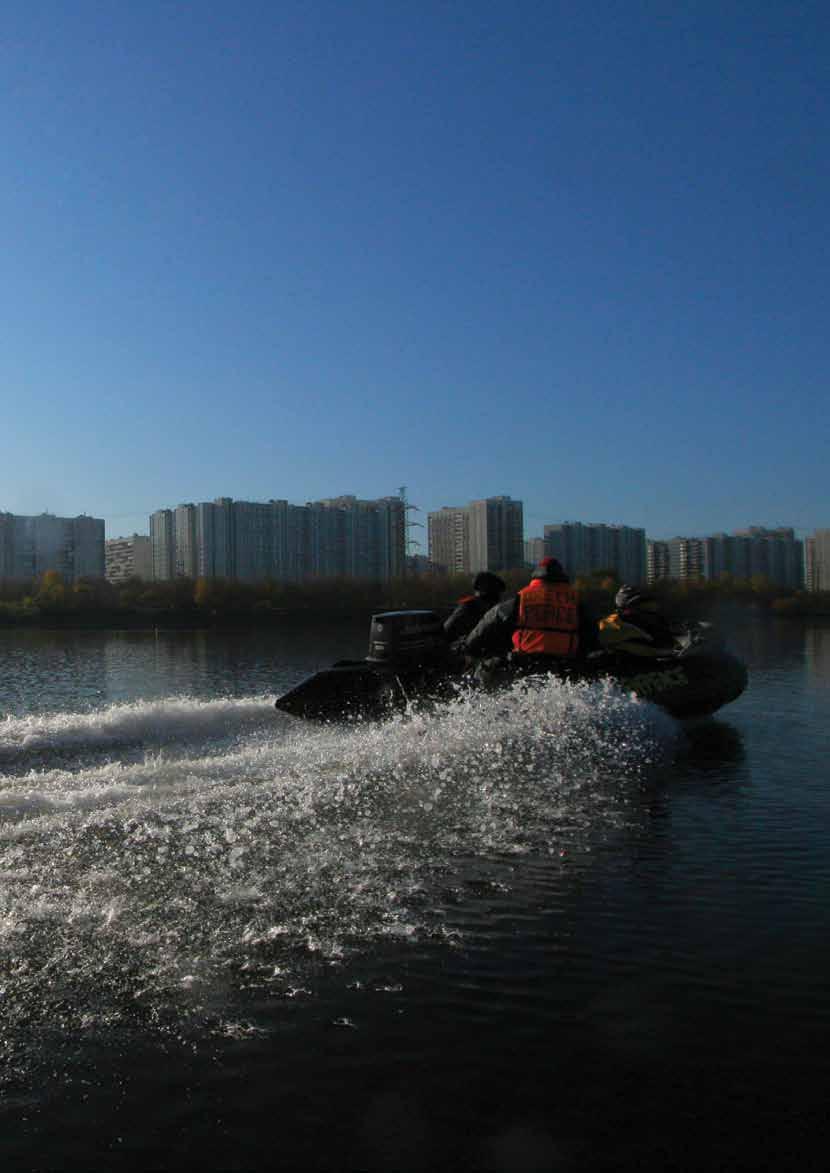
4 minute read
surface waters
Release of NP/NPEs to surface waters 3
Releases of NP/NPEs within the EU
The releases of NPEs from the washing of clothes and other fabric products contributes to ongoing inputs of NP to rivers, lakes and seas in the EU, predominantly via urban wastewater and sewage treatment plants that do not treat or prevent the release of these hazardous substances to the environment; at best, they break down NPEs to form NP which are released within treated water. Within the EU, where the use of NP and NPEs in clothing manufacturing has effectively been banned, inputs of NP to surface waters due to the washing of such products imported from outside the EU are still occurring, despite requirements made in 2000 under the Water Framework Directive (WFD) that all emissions, discharges and losses of ‘priority hazardous substances’ be phased out in the EU within 20 years, including NP 31 . Furthermore, it has been estimated in some instances that this source constitutes by far the largest source of these chemicals entering wastewater treatment facilities. For example, it has been estimated that residues of NPEs and NP in textile and leather goods in parts of Sweden were by far the largest source of these chemicals entering wastewater treatment facilities in 2004. 32
Greenpeace surveyed data on discharges of NP/NPE to surface waters in certain EU countries in a 2010 report 33 , which assessed publicly available information in the Czech Republic, Germany, Slovakia, Spain and the UK, namely monitoring data published within River Basin Management Plans and the European Pollutant Emission Registers as required under EU environmental laws. In relation to reported discharges data, we found the following information from national and EU Pollutant Release and Transfer Registers (PRTRs): The UK dataset on NP/NPE emissions in the EU PRTR allows a breakdown to river basin level. For the Thames River Basin District, 16 tonnes were released in 2007 from 22 sewage treatment plants. UK-wide, 66 tonnes are reported to have been released in 2007 from 112 sewage treatment plants.
The Spanish national PRTR reports some 1.19 tonnes of NP/NPE discharges in 2008, of which 1.18 tonnes were released from 12 Urban WasteWater Treatment Plants (UWWTPs). Nine out of these 12 are located in Catalonia, which contributed 1.09 tonnes;
The German PRTR reports one tonne of emissions in 2007, of which 0.35 tonnes were released from seven UWWTPs;
The Czech programme provides monitoring from 30 UWWTPs. The average NP concentration was 0.49 μg/l, although data on annual amounts released are not available; and
No emission data was made available in Slovakia.
Although not all sewage/UWWTPs are included for these countries and therefore total releases may be greater than the data indicate, these figures suggest that urban waste water and sewage treatment plants are the biggest sources of NP emissions within some of these countries. This finding is consistent with the limited scope of the 2003 EU emission controls 34 , which largely prohibits the marketing of NP/NPE containing products and their use in industrial processes, but allows imported textiles and other consumer articles containing NP/NPEs to be sold.
Further monitoring data
In addition to the data published in our 2010 report: 35
Czech Republic. There is additional recent information showing ongoing releases of NP, from a number of UWWTPs within the Czech Republic, as reported in 2009 36 . After Greenpeace Czech Republic pointed out that WWTPs were failing to meet their obligation to report releases of NP/NPE, some data recently began to be reported on the Czech PRTR for releases in 2009 and 2010, although for only a very limited number of facilities.
Spain. More recent data from the national Spanish PRTR shows some 0.99 tonnes of NP/NPE discharges from 24 facilities in 2010, of which 0.837 tonnes were released from 19 UWWTPs. 37 Seventeen out of the 19 UWWTPs are located in Catalonia and the other two in the Basque Country; however, this does not include data from all 140 large UWWTPs in Spain. 38 The 24 facilities that reported discharges of NP/NPE to water were those that exceeded the regulatory limit of 1 kilogram a year, which requires them to publicly report the data.
Releases of NPE and NP to surface waters outside the EU - Russia
Nonylphenol discharges from domestic WWTPs are not just a problem in the EU; such releases are also likely to be taking place in other countries. For example, Greenpeace Russia recently collected samples of treated wastewaters released by WWTPs in two locations in Russia. Based on NP/NPE concentrations in these samples the estimated combined NP/NPE annual releases from the Yaroslavl WWTP are 1.266 tonnes/year and 0.123 tonnes/year from the St Petersburg WWTP. 39
These data show that the discharge of NP/NPEs by urban wastewater treatment systems is not exclusively a problem in the EU, but that similar releases are occurring in Russia, and almost certainly in many other countries. It is likely that the washing of textile products containing NPEs contributes a considerable fraction of the total releases in many countries, especially where industrial uses of NPEs are prohibited. Discharges of NP via this route will continue in countries where the sale of products containing NPE residues has yet to be regulated, unless global action is taken by brands to eliminate the use of these substances during the manufacture of their products.






